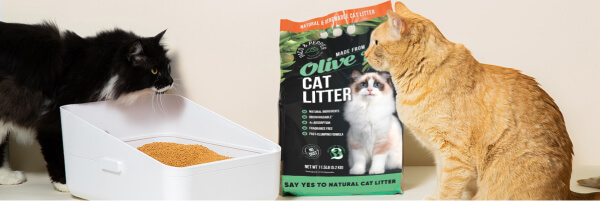How To Train a Cat To Use a Litter Box?

Litter box training your cat is an important and challenging task that will ensure a clean and hygienic environment for both you and your feline friend. Whether you're welcoming a new kitten into your home or helping an older cat adjust to a new litter box, proper preparation is essential. In this guide, we'll dive into effective litter box training strategies, giving you the knowledge and tools you need to successfully train your cat to use the litter box.
Nature of cats
Before beginning litter box training, every owner needs to understand their cat's natural instincts and behavior patterns. Cats are instinctively clean animals and they prefer privacy. This tendency comes from their wild ancestors, who sought out secluded areas to minimize the risk of detection by predators. Understanding your cat’s nature will help a lot to train a cat to use a litter box.
Correct tray installation
Choosing a suitable litter box and its correct installation are also the most important preparatory steps before starting litter box training:
- Size: Choose a litter box that is large enough for your cat to comfortably enter, turn around, and sit down without feeling cramped. Ideally, the litter box should be 1.5 times the length of your cat, leaving plenty of room for movement. Litter boxes with low sides are preferred, especially for kittens or older cats with mobility issues.
- Type: Litter boxes come in a variety of designs, including open trays, closed drawers, and automatic self-cleaning models. When choosing the type of litter box, consider your cat's preferences and habits. Some cats prefer the privacy of closed boxes, while others may feel confined and prefer open litter boxes. Automatic, self-cleaning litter boxes can be convenient, but can frighten some cats with mechanical noise.
- Location: To install the litter box, choose a quiet location with little traffic. Cats prefer privacy but will not eat, so choose a secluded area away from noisy appliances, lots of foot traffic, and other stressors. Do not place the litter box next to your cat's food and water dishes, as cats prefer to keep the elimination area separate from the feeding area.
- Accessibility: Make sure the litter box is always accessible to your cat. Do not place it in areas with obstructions or confined spaces that may prevent your cat from using it. In multi-level homes, install litter boxes on each floor to prevent accidents.
- Quantity: In multi-cat households, provide individual litter boxes for each cat to prevent competition and territorial disputes.
By taking these factors into account and properly installing the litter box, you can create a comfortable and attractive environment that will encourage your cat to use the litter box, which lays the foundation for successful litter box training.
Building positive associations
How to train my cat to use a litter box? Building positive associations with the litter box is essential for successful learning. Here are some tips to help make your cat's introduction a positive and stress-free experience:
- Timing: Choose appropriate times to introduce your cat to the litter box, such as after eating or sleeping, when she is most likely to need to use the litter box. Gently place your cat in the litter box and let her explore it.
- Eliminate negativity and coercion: You can gently scratch the litter with your cat's fingers or paws, thereby introducing it to the cat and showing that the litter is not dangerous. Do not force your cat into the litter box or make sudden movements that might frighten it.
- Rewards: Reward your cat for using the litter box with praise, treats or toys. Rewards like these create a positive association with the litter box, encouraging your cat to return to it in the future. Try to offer rewards immediately after your cat uses the litter box. Encouraging your cat will really help you train your cat to use the litter box
- Patience and persistence. Litter box training can take time, especially for kittens or cats who have had negative experiences using the litter box in the past. Be patient and consistent in your learning, offering support throughout the process. Do not scold or punish your cat for accidents outside the litter box, as this can create negative associations and hinder progress.
- Create a welcoming environment: Make sure the litter box is clean, welcoming, and easily accessible for your cat. Maintain proper hygiene by regularly picking up litter and replacing litter as needed. Also, consider placing the litter box in a quiet, secluded area where your cat will not be frightened or distracted.
By following these tips and creating positive associations with the litter box, you can avoid stress and be successful in toilet training your cat. Remember to be patient, persistent, and supportive throughout the training process, and celebrate your cat's successes along the way.
How to train an old cat to use a litter box
What about outdoor and old cats. How to train an old cat to use a litter box? For older or outdoor cats transitioning to indoor living, gradual litter box training is key. Start by placing the litter box near the previous area where your cat relieved itself, and over time, gradually move the litter box closer to the room and location where you want to eventually install the litter box. You can also install multiple litter boxes in different locations, using different types of litter to determine your cat's preferences. Be patient and consistent in encouraging and supporting your friend's journey to using a litter box.
By understanding your cat's behavior, ensuring proper litter box placement, and using positive association techniques, you can successfully train your cat to use the litter box.


